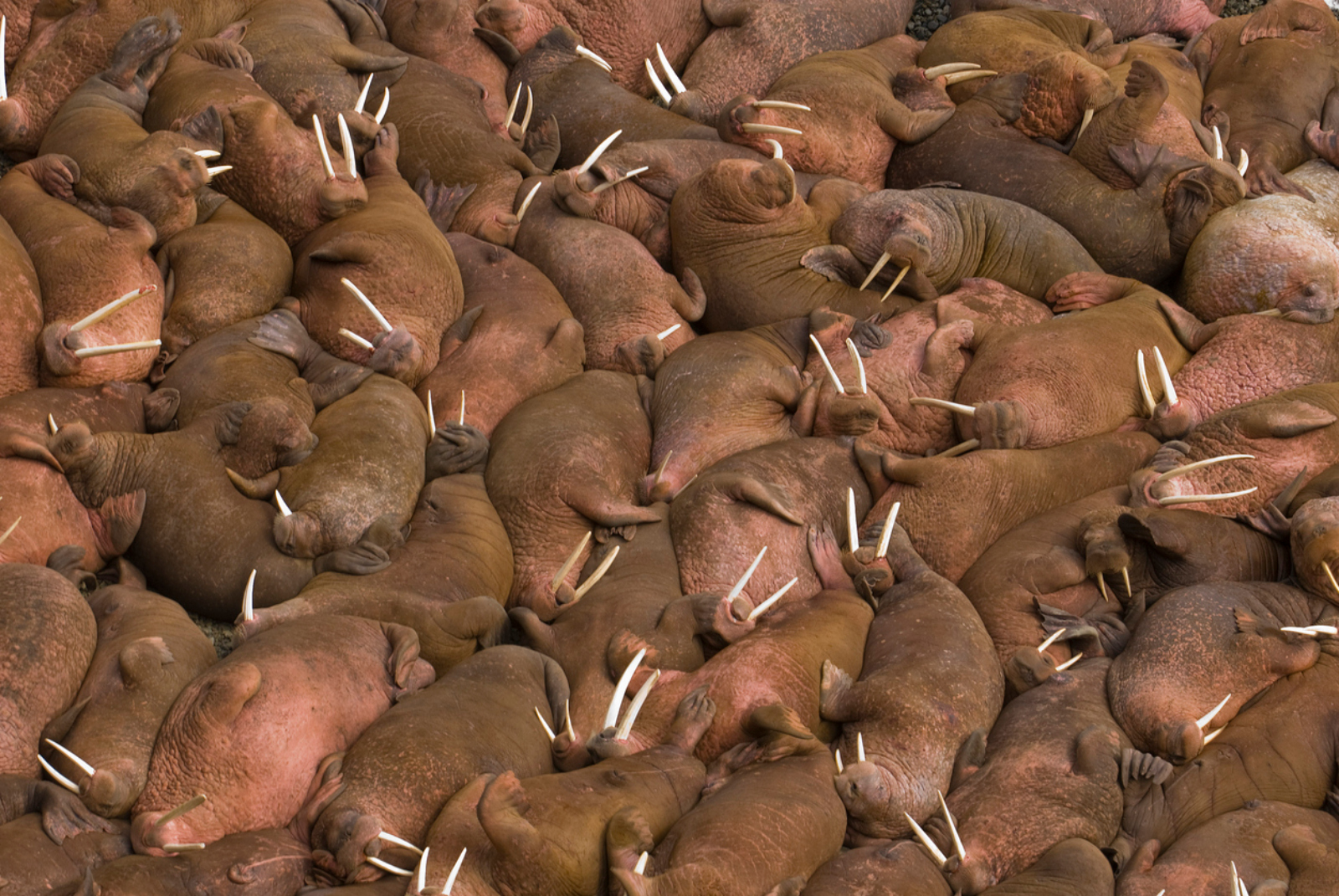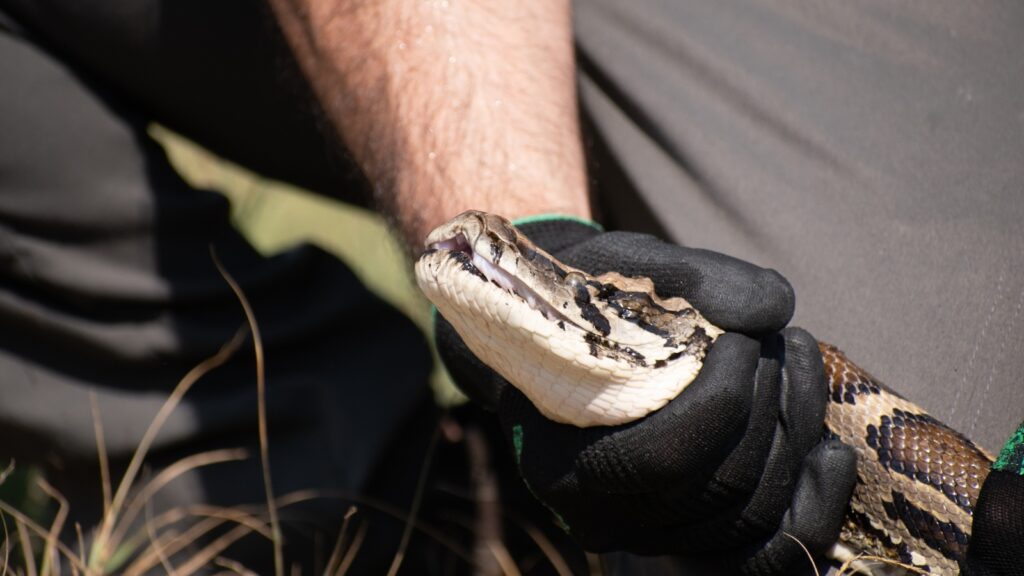Florida Fish and Wildlife Conservation Commission
The Conservancy of Southwest Florida announced this week that the efforts to eradicate invasive Burmese python snakes from the wild in Florida had hit a major milestone: over 40,000 pounds of Burmese pythons have been removed from a 200-square-mile area since 2013… On the surface that seems great, right?
Their announcement also came with the news that this year’s removal season spearheaded by the Conservancy of Southwest Florida set a record with 6,300 pounds of Burmese pythons removed from the wild. But is that a lot?
As a native Floridian, born and raised, I am as happy as anyone to hear that tens of thousands of pounds worth of Burmese pythons have been removed from the wild but I was curious how the numbers look when put into context. Firstly, they stipulate that these 40,000+ pounds of invasive pythons were removed from a 200-square-mile area which is certainly smaller than the total area inhabited by these pythons. So that’s concerning…But let’s break it all down.
According to a fact sheet on Crittersquad, Burmese pythons can live 20-25 years on average and weigh between 80-200 pounds while reaching lengths of 12 to 18 feet. They are among the largest snakes on earth and here in Florida, there’s great urgency to capture and eradicate these snakes before they get to that size because the massive ones pose a much bigger threat due to reproduction and the prey they are capable of eating.
So, let’s call it 40,000 pounds removed at an average of 80 pounds per snake. That is 500 snakes. At 20 an average of 20 pounds per snake, that’s 2,000 snakes and at 5 pounds the math shakes out to 8,000 snakes. Obviously, there have been a LOT more than 500 snakes removed from the wild over the past 12 years but there have been some outliers on the heavier side… Some of these snakes are HUGE by the way:
40,000 Pounds Of Burmese Pythons Removed From Florida, What Does That Even Look Like?
Since our human brains aren’t particularly adept at visualizing what 40,000 pounds of something looks like, I thought I’d share some examples. For starters, here is what 40,000 pounds of potatoes looks like which is actually a shockingly good example of what 40,000 pounds of invasive Burmese pythons might look like:
I came across this chart on X (née Twitter) which shows the average weights of of the largest land animals in North America:
Chart shows the weight of the heaviest animals seen on land in North America. No, “your mum” was not listed… pic.twitter.com/D6xoe37ylb
— Simon Kuestenmacher (@simongerman600) April 13, 2023
Based on that chart, the 40,000 pounds of snakes would be roughly equivalent to 7.8 elephant seals, 9 walruses, 15.4 bison, 26 moose, 26.6 polar bears, 28.5 grizzly bears, and/or 57 American alligators. That’s a lot, right? I count over 50 walruses in this photo… And we’re talking about just 9 walruses worth of snake weight in 12 years!

iStockphoto / Credit:halbrindley
I feel like that’s a lot, but we’re talking about 12 solid years of removing these invasive Burmese pythons from the wild, or approximately 3,333.33 pounds per year of invasive snakes removed. That’s less than 1 walrus per year worth of snake weight that is being removed from South Florida. You’d think we could at least manage a walrus worth each year, right???
The 2025 Cadillac Escalade has a curb weight of 5,807 pounds, so that’s 6.8 Escalades worth of snakes removed. I find that a chilling thought for some reason.
The heaviest human in history was Jon Brower Minnoch who weighed 1,400 pounds. So we are talking about 28.5 of the heaviest human being in all of human history… That certainly feels like a lot of snakes to me.
Of course, the actual expeditions throughout Southwest Florid and the Florida Everglades region to remove these invasive Burmese pythons looks like literal Hell on earth. The mosquitos, no-see-ums, suffocating humidity and oppressive sun all combine for removal expeditions that are best undertaken at night…When there’s more mosquitoes.
Interestingly, I reached out to some professional snake hunters late last year to ask about guided snake hunt rates because I wanted to find the 20-footer and the prices were more than I expected at $1,000/person. They told me they’d knock off $200 (gratuity not included) but I started to get the sense that there’s now an aspect to all of this where guides are incentivized to keeps some snakes in the wild because they make more money taking people on guided hunts than they do from removing these invasive pythons from the wild. Some food for thought.
For all the guff we take about ‘Florida Man,’ I’d think that we could do a better job at removing invasive snakes from our state’s sensitive ecosystems…
Content shared from brobible.com.

